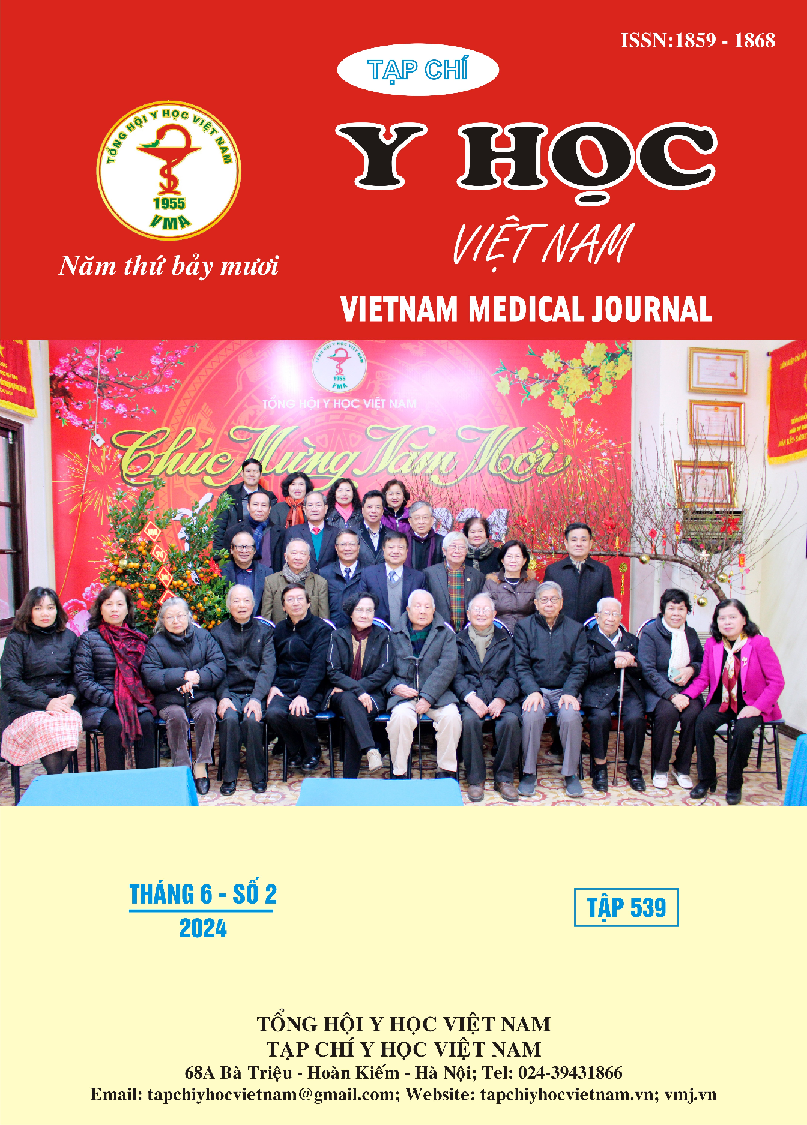STUDY ON REAL-TIME PCR METHOD TO EXAMINE AEROBIC MESOPHILIC BACTERIA CRITERIA ON BACTERIAL LIMITS OF PHARMACEUTICALS
Main Article Content
Abstract
Background: Microbiological testing is a mandatory requirement for pharmaceuticals being put into circulation on the market. Real-time PCR is a technique that enables rapid detection of microorganisms present in a sample with high sensitivity and precision. Objectives: This research aims to study real-time PCR techniques for examining aerobic mesophilic bacteria criteria of bacterial limits. Methods: The RNA extraction method using SDS-TRIzol was investigated on Gram-positive and Gram-negative bacterial strains. For each criterion on determining the bacterial limits by real-time PCR, the primers were checked in silico and in vitro, selected at the appropriate concentration. The method of quantifying microorganisms using real-time PCR was validated for specificity, linearity, precision, accuracy, the limit of quantification (LOQ), and the limit of detection (LOD). Results: The RNA extraction method using SDS-TRIzol gives the best RNA extraction efficiency with a heat treatment time to break down bacterial cell walls of 5 minutes and does not require treatment with lysozyme. Method to quantify the total number of aerobic mesophilic bacteria using RT-qPCR technique with the pair of primers Bac_890F/ Bac_1034R at a concentration of 50 nM had LOQ and LOD values of 8 CFU/ml and 2 CFU/ml, respectively. The examination method met the validation requirements of specificity, linearity, precision, and accuracy (RSD < 25%). Conclusions: The real-time PCR technique could be applied to examine aerobic mesophilic bacteria criteria of bacterial limits in pharmaceuticals.
Article Details
Keywords
real-time PCR, bacterial limits, aerobic mesophilic bacteria
References
2. Broeders S., Huber I., Grohmann L., et al. (2014). “Guidelines for validation of qualitative real-time PCR methods”, Trends in Food Science and Technology, 37 (2), pp. 115-126.
3. Kralik P., Ricchi M. (2017). “A basic guide to real time PCR in microbial diagnostics: definitions, parameters, and everything”, Frontiers in Microbiology, 8 (108), pp. 1-9.
4. Yang S., Lin S., Kelen G. D., et al. (2002). “Quantitative multiprobe PCR assay for simultaneous detection and identification to species level of bacterial pathogens”, Journal of Clinical Microbiology, 40 (9), pp. 3449-3454.
5. Nadkarni M. A., Martin F. E., Jacques N. A., et al. (2002). “Determination of bacterial load by real-time PCR using a broad-range (universal) probe and primers set”, Microbiology, 148 (1), pp. 257-266.
6. Tillman G. E., Simmons M., Wasilenko J. L., et al. (2015). “Development of a Real‐Time PCR for Escherichia coli based on gadE, an acid response regulatory gene”, Letters in Applied Microbiology, 60 (2), pp. 196-202.
7. Bej A. K., McCarty S. C., Atlas R. M. (1991). “Detection of coliform bacteria and Escherichia coli by multiplex polymerase chain reaction: comparison with defined substrate and plating methods for water quality monitoring”, Applied Environmental Microbiology, 57 (8), pp. 2429-2432.
8. Liang T., Long H., Zhan Z., et al. (2022). “Simultaneous detection of viable Salmonella spp., Escherichia coli, and Staphylococcus aureus in bird’s nest, donkey‐hide gelatin, and wolfberry using PMA with multiplex real‐time quantitative PCR”, Food Science and Nutrition, 10 (9), pp. 3165-3174.


